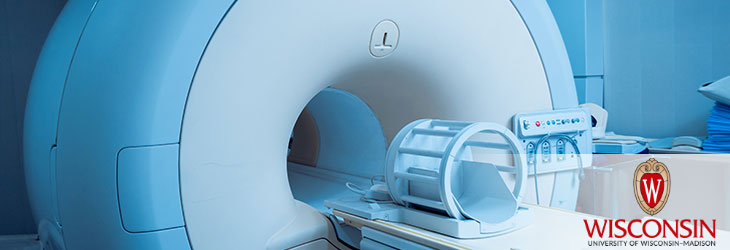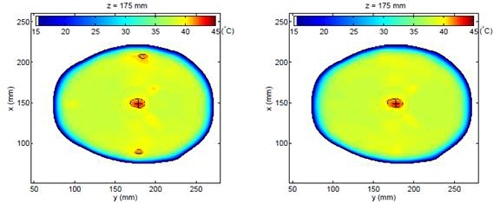Radiation Therapy

Targeted Microwave Hyperthermia Therapy to Eliminate Hot Spots
WARF: P110023US01
Inventors: Susan Hagness, Barry Van Veen, Joshua Medow, Earl Zastrow
The Wisconsin Alumni Research Foundation (WARF) is seeking commercial partners interested in developing a method of microwave hyperthermia that prevents unintended “hot spots.”
Overview
Clinical hyperthermia involves elevating the temperature of targeted tissue for therapeutic means. In oncology, hyperthermia can be used to make cancer cells more susceptible to radiation therapy or chemotherapy, directly treat cancer cells, or trigger heat-activated or released drugs. One method to non-invasively induce hyperthermia is to focus microwave energy at the target site using transmitters external to the body. The determination of the proper phase and amplitude of the microwave power may take into account the electrical properties of the intervening tissue of the patient to correct for phase shifts and attenuation caused by the tissue.
It is impossible to find a given set of phase and amplitude values that focus the microwave radiation for a treatment pattern while completely suppressing microwave energy deposited outside of the treatment pattern. Unwanted heated zones, or “hot spots,” form outside the tumor region, which limits the amount of energy that can be applied to the tumor without damage to healthy tissue. A persisting challenge in microwave hyperthermia is the avoidance of unintended auxiliary hot spots.
It is impossible to find a given set of phase and amplitude values that focus the microwave radiation for a treatment pattern while completely suppressing microwave energy deposited outside of the treatment pattern. Unwanted heated zones, or “hot spots,” form outside the tumor region, which limits the amount of energy that can be applied to the tumor without damage to healthy tissue. A persisting challenge in microwave hyperthermia is the avoidance of unintended auxiliary hot spots.
The Invention
UW–Madison researchers have developed a method of microwave hyperthermia that prevents hot spots by cycling through different antenna array settings, each having a common treatment zone but providing relative “cold spots” or suppression regions in different locations. Effective hyperthermia treatment schedules can be produced by offsetting potential hotspots in one antenna array setting with cold spots in that location in a different antenna array setting. Cycling through antenna settings over time reduces or eliminates auxiliary hot spots. The treatment planning system may include an electronic computer that executes a stored program to receive data about the tissue of a patient, and then uses the data to model and select a set of power deposition patterns that will control average power deposition to the tissue region outside the intended treatment region.
Applications
- Treatment planning for non-invasive microwave hyperthermia therapy
Key Benefits
- Reduces or eliminates undesired hot spots relative to conventional microwave hyperthermia techniques
- Permits flexibility in selecting power deposition patterns while providing relatively constant treatment temperatures
Additional Information
For More Information About the Inventors
Tech Fields
For current licensing status, please contact Jeanine Burmania at [javascript protected email address] or 608-960-9846
Figures
